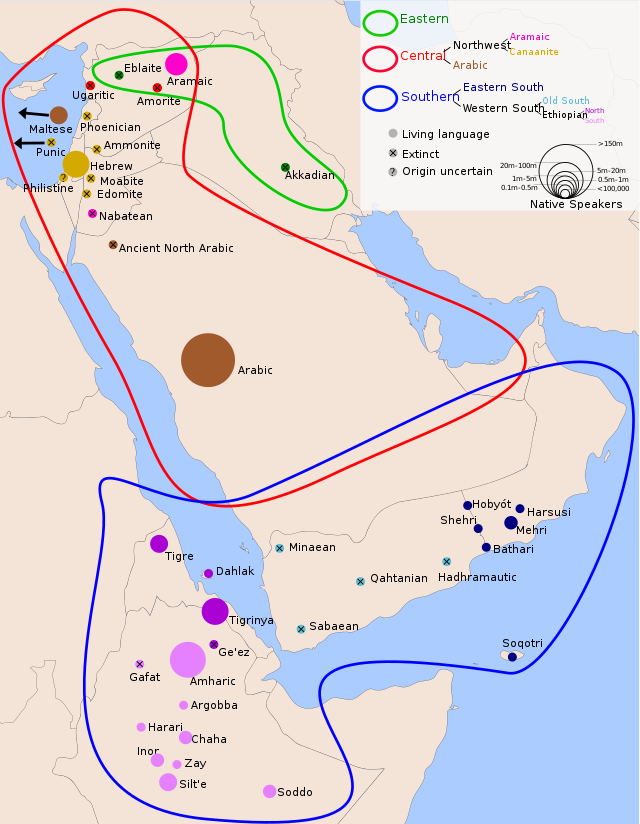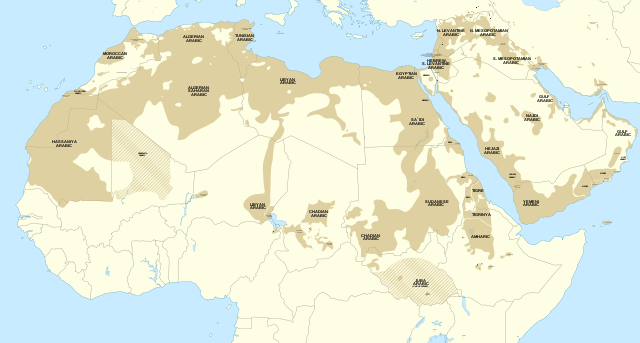Arabs are Semites too

Semitic Family Photo. Photo: Wikimedia
By: Joud Sleilaty / Arab America Contributing Writer
Introduction:
The term “antisemitism” has long been associated with discrimination against Jewish people, forming a core element of discussions surrounding religious, cultural, and ethnic prejudices. However, this conventional definition oversimplifies the complexity of the term, overlooking its historical roots and broader implications. In this article, we delve into the layers of antisemitism, questioning its conventional portrayal and shedding light on the shared ancestry of Jewish and Arab populations.
Depicting the Word “Antisemitic”:
To understand the term “antisemitic,” it’s crucial to break down its components: “Anti” and “Semite.” A Semite refers to a member of any group speaking a Semitic language, including Jews and Arabs. The term encompasses languages such as Hebrew, Arabic, Aramaic, and ancient languages like Phoenician and Akkadian, constituting a significant subgroup of the Afro-Asiatic family. Therefore, being antisemitic does not solely pertain to discrimination against Jews; it extends to hostility towards any Semitic group.
However, the Oxford English Dictionary defines antisemitism more narrowly as “prejudice, hostility, or discrimination towards Jewish people on religious, cultural, or ethnic grounds.” This limited interpretation fails to capture the broader scope of the term’s historical roots. So how did we transition from recognizing a wider range of Semitic identity to this more confined definition?

Semitic Languages. Photo: Wikimedia
History of the Term Antisemitism:
The term “Semite” was first used in 1781, while “antisemitism” in its Germanic form emerged in the mid-nineteenth century. Moritz Steinschneider, an Austrian Jewish scholar, introduced “antisemitische vorurteile” (anti-Semitic prejudices) in 1860. He did so to counter the ideas of French philosopher Ernest Renan, who had suggested the inferiority of the Semitic race compared to the Aryan race.
Later in Germany, journalists, academics, clerics, and politicians popularized the terms “Antisemiten” and “Antisemitismus” after 1879 but mainly for discriminatory reasons. They argued that granting civil and political equality to Jews in 1871 was a mistake, advocating state action to protect Germans from Jewish influence.
Due to the escalating discrimination against the Jewish population, particularly in Europe, the term “antisemitic” began to be utilized in literature to denounce such biases. As the Jewish community predominantly employed this term, over time, individuals and scholars gradually deviated from its initial broader meaning. Consequently, the term evolved to designate exclusively Jewish people rather than encompassing all Semitic groups.
Other Terminology:
Several scholars, including Barry Kosmin and Shlomo Sands, have proposed alternative terms like “Judeaophobia” to capture generalized hostility toward Jews. Manfred Gerstenfeld suggests “anti-Israelism,” while discussions at the ‘Anti-Jewish and Anti-Muslim Racisms and the Question of Palestine/Israel’ conference talk of racisms in the plural. Despite these debates, the term antisemitism continues to predominantly designate Jewish people. Notably, during conflicts such as the war in Gaza, pro-Israel supporters have wielded the term “antisemitic” to criticize pro-Palestine advocates, exemplifying the ongoing challenges in broadening the understanding of this complex issue. Moreover, the misuse of the term has led to its conflation with antizionism, further complicating the discourse around discrimination and bias.

Map of the Semitic World. Photo: Wikimedia
Arabophobic?
Interestingly, there is no widely recognized term for discrimination against Arabs comparable to antisemitism. While “Islamophobia” exists, it inaccurately lumps together all Arabs as Muslims, neglecting the diversity within Arab communities as well as muslim communities. The term “Arabophobia” is not officially recognized by the Oxford English Dictionary, leaving a linguistic gap in describing discrimination specifically against Arabs.
Conclusion:
In conclusion, the term “antisemitism” goes beyond its conventional definition, encompassing discrimination against any Semitic group. Its historical roots reveal a shared heritage between Jewish and Arab populations, challenging the narrow portrayal of antisemitism as solely directed at Jews. The absence of a widely accepted term for discrimination against Arabs highlights linguistic limitations and the need for a nuanced vocabulary to address various forms of prejudice. Unraveling the layers of antisemitism requires acknowledging its historical context and embracing a more inclusive understanding of Semitic identity.
Check out Arab America’s blog here!








